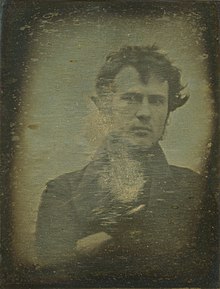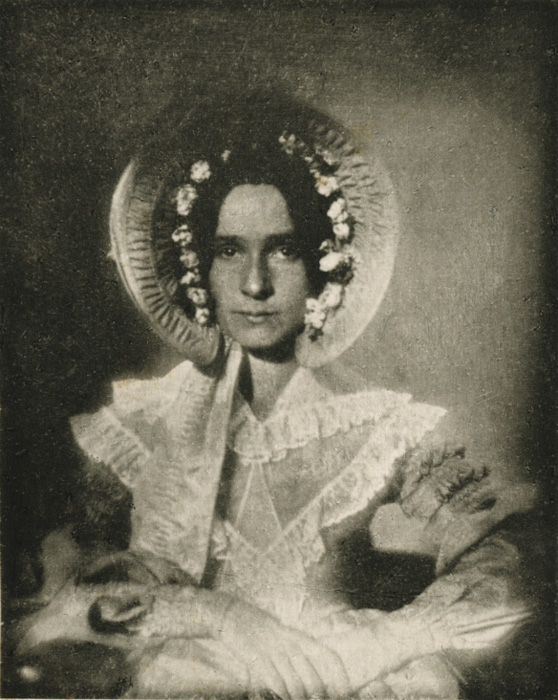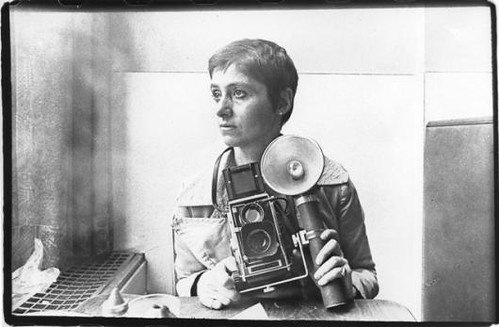Portraiture was originally a form of fine art. It was only available to those of the upper class and of royalty. These kinds of portraiture were costly. Throughout the centuries, portraiture moved in to using models, while less accessible to the poor to buy, they could be seen in them. The development photography, the first portraiture was produced by Robert Cornelius, a self portrait in Oct/Nov 1839 on approximately a quarter plate daguerreotype. This was the first photographic portrait image of a human to be produced.
Before the discovery of the photo the oldest known photograph portrait, was this (to the left) made by Dr. Joseph Draper, New York 1840, the subject is his sister Anna Katherine Draper. Count Sergei Lvovich Levitsky designed a bellows camera which significantly improved the process of focusing. This modification has influenced the designs of cameras for decades and can still be seen in use in some modern professional cameras. Levitsky was the first to introduce interchangeable decorative backgrounds while in Paris. He was also the first photographer to portray a photo of a person in different poses and even different clothes. Levitsky first propose the use of artifically lighting on subjects in a studio setting along with daylight. He would say of its use, "as far as I know this application of electric light has never been tried; it is something new, which will be accepted by photographers because of its simplicity and practicality"
In the mid 19th century photography become popular and in July 1888 Eastmans's Kodak camera went on the market with the slogan "You press the button, we do the rest". Photography became available to the mass market in 1901 with the introduction of the Kodak Brownie, this lead to portraiture to become accessible to all. While most portraiture is stage/posed model, some are more like street photography, still partially posed, there was more of a base and real looking feel to the photographs that were produced.
One of the photographers that did this style of street photography was Diane Arbus(above). Her photographs feel like a mix between social documentation and portraiture. The models are staged but we have glimmers of their lives, as many of her subjects seem to look passed the camera. Them seemed to be reflecting on their lives. However there is a sort of intimacy between Arbus and her subjects. This could be because she was curious about people’s lives, and in awe of their individualizes. As well as the fact that she spend time with her subjects to build their trust could be one of the reasons of the astounding mix of surreal but real images.
In portrait photography the main focus is the subjects face, the main idea is to focus on the subjects face, personality or even their mood. The subject control how they should look, while with styles like that of Arbus’s, the subject is shown from both how they and she believe they should be shown. Portrait photography the subject is often looking directly into the camera.
We commission portraits for many reasons, most often the subjects of portraiture are non professional models. family portraits in special occasions, such as weddings. These kinds of portraitures are more often to be seen for private viewing rather than being shown in a public exhibition.
I personally like Diane Arbus’s style, she is very influential to be and I find that her images while sometimes shocking do strike a chord in the viewers.


